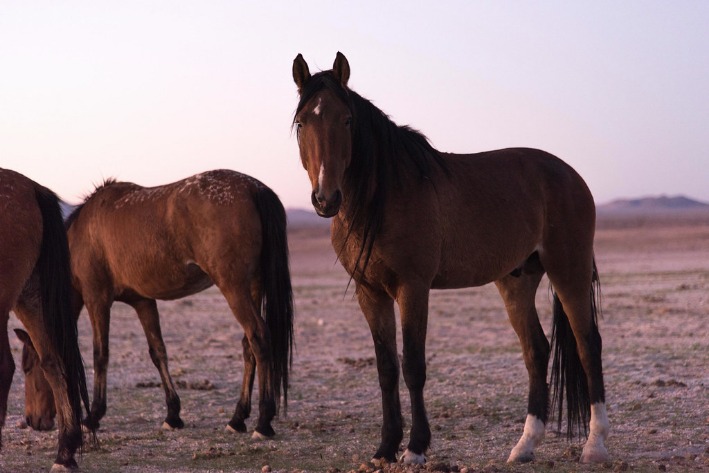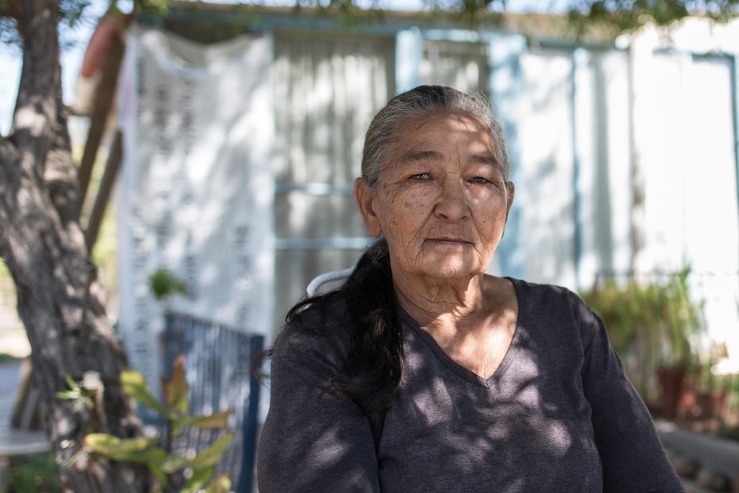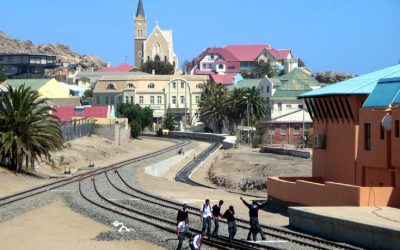Historical Context of Namibia
The history of Namibia is marked by a complex and turbulent past shaped by colonization, conflict, and struggle for independence. During the early 20th century, the region was subjected to German colonial rule, which resulted in significant oppression and violence against indigenous populations. The period leading up to Namibia’s independence was characterized by guerrilla warfare, political unrest, and efforts to address the injustices inflicted upon its people. Understanding this historical context is crucial to comprehending the tragic events and the ongoing impact of genocide in Namibia’s history.
Pre-Colonial Societies
The historical context of Namibia’s genocide is rooted in the colonial period, particularly during South Africa’s occupation and the brutal repression of indigenous communities. Prior to colonization, Namibia was home to diverse and thriving societies, each with distinct cultural, social, and political structures. These pre-colonial societies laid the foundation for resisting external domination and maintaining their sovereignty against colonial forces.
During the late 19th and early 20th centuries, Namibia was affected by European imperialism, notably the German colonization from 1884 to 1915. The indigenous Himba, Herero, Nama, and various other groups experienced the imposition of foreign rule, which disrupted their traditional lifestyles. The Herero and Nama people faced catastrophic violence when German colonial authorities sought to suppress uprisings, resulting in what is now recognized as one of the first genocides of the 20th century.
- The Herero uprising of 1904 was met with brutal military campaigns, including massacres, forced labor, concentration camps, and the use of genocidal tactics.
- The Nama rebellion was similarly suppressed with extreme violence, leading to massive death tolls among Nama populations.
- The post-colonial period saw continued racial segregation, repression, and policies that marginalized indigenous peoples, particularly under South African rule after World War I.
This dark chapter in Namibia’s history culminated in the systematic extermination of its indigenous populations during German colonial rule, with lasting impacts that shape the nation’s understanding of human rights and justice today.
German Colonial Era (1884-1915)
The German Colonial Era in Namibia, spanning from 1884 to 1915, was marked by aggressive expansion and brutal repression. During this period, Germany established control over the region, then known as German South West Africa, and implemented policies that prioritized economic exploitation and territorial dominance. The indigenous Herero and Nama peoples resisted German encroachment, which led to a series of violent confrontations. These conflicts culminated in the Herero and Namaqua genocide, one of the earliest genocides of the 20th century, where tens of thousands of Herero and Nama were killed or subjected to forced labor, starvation, and concentration camps. The era’s atrocities were driven by colonial ambitions and racial ideologies that dehumanized the indigenous populations, laying a dark foundation for Namibia’s history of violence and suffering. These events remain a poignant reminder of colonial brutality and its lasting impact on Namibian society today.
South African Administration and Apartheid Policies (1915-1990)
The historical context of Namibia, particularly during the period of South African administration and apartheid policies from 1915 to 1990, is marked by profound struggles for independence and the impact of systemic racial oppression. Namibia, formerly known as German South West Africa, was mandated to South Africa after World War I, which led to the imposition of apartheid-style policies aimed at enforcing racial segregation and marginalizing the indigenous populations, especially the Herero and Nama communities. These policies contributed to severe social, economic, and political disenfranchisement, setting the stage for extensive resistance movements and international condemnation.
During the South African administration, Namibia experienced widespread human rights abuses, which many scholars describe as genocidal in nature, particularly against the Herero and Nama peoples. The extermination campaigns, forced relocations, and suppression of uprisings resulted in catastrophic loss of life and cultural disruption. The struggle for independence intensified, culminating in the formation of the South West Africa People’s Organization (SWAPO) and protracted guerrilla warfare against South African forces. The international community played an increasingly significant role, with economic sanctions and diplomatic pressure contributing to the eventual withdrawal of South African forces and Namibia’s independence in 1990.
- German colonization from 1884 to 1915 laid the initial groundwork for ethnic tensions and land dispossession among indigenous peoples.
- Following World War I, the League of Nations mandated South Africa to govern Namibia, which facilitated the continuation and escalation of racist policies.
- apartheid policies implemented in Namibia included pass laws, restrictions on movement, and segregation in education, healthcare, and public services.
- Massacres, forced removals, and brutal suppression campaigns against Herero and Nama communities are considered by many historians as acts of genocide.
- The armed struggle led by SWAPO, along with international solidarity, increased awareness of Namibia’s plight and intensified pressure for change.
- Namibian independence was achieved in 1990, ending decades of colonial and apartheid rule, but the legacy of violence and trauma continues to influence the nation.
This period remains a significant chapter in Namibia’s history, reflecting both the brutality of apartheid and the resilience of its people in their fight for liberation and recognition of their rights.
Timeline of the Genocide
The genocide of Namibia, also known as the Herero and Namaqua genocide, was a tragic and devastating event that took place between 1904 and 1908 during German colonial rule. This dark chapter in history involved the mass killing, forced displacement, and brutal repression of the Herero and Nama peoples, leading to a significant loss of life and cultural destruction. Understanding the timeline of these events is crucial to acknowledging the atrocities committed and their lasting impact on Namibia’s history and its people.
Initial Conflicts and Resistance Movements
The genocide of Namibia, primarily caused by the German colonial forces, unfolded through a series of brutal conflicts and resistance efforts. It marked a dark chapter in the region’s history, characterized by intense violence, suppression of resistance, and widespread atrocities against the indigenous peoples, especially the Herero and Nama nations.
The timeline of these events can be summarized as follows:
- Initial Conflicts:
- In 1904, tensions escalated when German colonial authorities attempted to assert control over the Herero and Nama tribes, driven by land disputes and colonial ambitions.
- The outbreak of armed resistance began as the Herero and Nama tribes organized rebellions against German rule, aiming to defend their land and ways of life.
- German forces responded with overwhelming military force, deploying troops to suppress the uprisings and establish dominance over the territories.
- Resistance Movements:
- The Herero people, under the leadership of Chief Samuel Maharero, mounted significant guerrilla resistance, which lasted until 1907. Despite initial successes, they faced brutal reprisals.
- The Nama also organized formidable resistance, led by Hendrik Witbooi, fighting fiercely against colonizers until their defeat.
- Both tribes faced systematic atrocities, including massacres, forced labor, and displacement, which aimed to eradicate their populations and suppress any future resistance.
- The Genocide and Its Aftermath:
- Between 1904 and 1908, German colonial authorities implemented genocidal policies that led to the deaths of an estimated 65,000 Herero and 10,000 Nama people.
- The atrocities included mass killings, starvation, dehydration in desert areas, and other inhumane treatments aimed at exterminating the indigenous populations.
- These events are now recognized as one of the earliest genocides of the 20th century, leaving a lasting legacy of trauma and resistance efforts in Namibia.
The Herero and Namaquese Rebellions
The genocide of Namibia primarily refers to the atrocities committed against the Herero and Namaqua peoples between 1904 and 1908 during German colonial rule. This tragic event is marked by a series of violent confrontations and systematic extermination campaigns carried out by the German Imperial Army. The timeline begins with the oppression and displacement of the Herero and Namaqua communities as German settlers expanded their territories, seeking to control land and resources.
In 1904, the Herero people, led by Chief Samuel Maharero, rebelled against German domination in response to land confiscations and harsh treatment. German forces responded with brutal military campaigns, engaging in battles that resulted in significant Herero casualties. After initially pushing the Herero back, the German troops employed scorched-earth tactics, destroying villages, livestock, and water sources to suppress resistance.
The Namaqua, another indigenous group in southern Namibia, also rebelled in 1904 under the leadership of Hendrik Witbooi and others. The Namaqua Rebellion was similarly met with ruthless military suppression. By 1905, German forces had intensified their efforts, implementing policies of extermination, forced labor, and concentration camps that decimated these communities.
The most infamous phase of the genocide occurred in 1905-1907, when German forces committed mass executions, forced relocations, and other atrocities. The use of poison gas and systematic shootings resulted in the deaths of tens of thousands of Herero and Namaqua people. The genocide officially concluded in 1908, but the impacts persisted for decades, profoundly affecting the demographic and cultural fabric of Namibia.

This event is recognized as one of the first genocides of the 20th century and remains a critical chapter in understanding colonial violence and its long-lasting effects on Namibia’s history and indigenous populations.
German Military Campaigns and Atrocities (1904-1908)
The genocide of Namibia, also known as the Herero and Namaqua genocide, took place between 1904 and 1908 during the German colonial rule in South West Africa, now Namibia. This period was marked by a series of brutal military campaigns initiated by the German Empire against the Herero and Nama peoples who rebelled against colonial oppression. The German military campaigns began in earnest after the Herero uprising in 1904, with decisive and often savage acts of suppression. German forces used scorched-earth tactics, destroying villages, livestock, and water sources to weaken resistance. Concentration camps and forced labor were extensively employed to subjugate the populations, leading to mass deaths from starvation, dehydration, and violence. Atrocities such as massacres, systematic executions, and affected widespread displacement characterized these campaigns. The period culminated in a brutal act of genocide, with estimates suggesting that up to 80% of the Herero and 50% of the Nama population perished. The campaigns, driven by motives of colonial expansion and resource exploitation, resulted in profound suffering and left a lasting impact on Namibia’s history, recognized today as one of the first genocides of the 20th century.
The Implementation of the Final Solution
The implementation of the Final Solution is a term historically associated with the Nazi plan for the systematic extermination of Jews during World War II. However, in the context of the Namibia genocide, a different but equally tragic sequence of events unfolded. The genocide of the Herero and Nama people took place between 1904 and 1908 as German colonizers sought to subjugate and exterminate these indigenous groups. The timeline begins in 1904 when German forces launched a brutal campaign against the Herero people following a rebellion, and quickly expanded to include the Nama. By 1905, the Germans employed scorched-earth tactics, destroying villages and herds, and decimating entire communities. In 1907, German authorities instituted concentration camps where thousands of Herero and Nama were held under inhumane conditions, leading to mass death due to neglect, starvation, and disease. The genocide reached its peak in 1908 when only a fraction of the original population remained. The atrocities committed in Namibia during this period are now recognized as a genocide, marked by systematic violence and exploitation aimed at eradicating these indigenous peoples from their land. The long-term effects of this genocide continue to influence Namibia’s society and discussions around justice and reconciliation centuries later.
Escalation of Violence and Massacres
The genocide of Namibia, known as the Herero and Namaqua Genocide, took place between 1904 and 1908 during German colonial rule. The timeline of events marks a disturbing escalation of violence and systematic massacres against the indigenous Herero and Nama peoples. It began when German forces, seeking to suppress resistance to colonial authority and seize land, employed brutal military campaigns. In 1904, the Herero, led by Chief Samuel Maharero, initiated uprisings which prompted harsh retaliatory actions from the Germans. Over the following years, German soldiers executed massacres, forced mass relocations into concentration camps, and implemented scorched-earth tactics. The massacre reached its peak in 1906 and 1907, with thousands of Herero and Nama people dying from executions, starvation, and disease in concentration camps. The violence gradually diminished by 1908, but the devastating loss of life and cultural destruction had already caused lasting trauma and set a precedent of racial brutality during the colonial era. The timeline of these events underscores a tragic chapter of colonial violence and genocide in Namibia’s history.
End of German Rule and Transition to South African Control
The genocide of Namibia, also known as the Herero and Namaqua Genocide, took place between 1904 and 1908 during German colonial rule. This period was marked by widespread atrocities committed by the German Empire against the Herero and Nama communities, who revolted against colonial oppression. The conflict resulted in the death of approximately 65,000 Herero and 10,000 Nama people through massacres, forced relocations, and starvation strategies. The genocide officially ended as German military campaigns were gradually exhausted, and the colonies faced international and internal pressures.
Following the conclusion of German control, Namibia was administered as a League of Nations mandated territory under South African rule from 1915 onward, after South Africa seized the territory during World War I. The transition marked a shift in control but not in the continuation of oppressive policies against indigenous populations. South African administration imposed apartheid-like policies, which further marginalized the indigenous tribes and delayed significant political independence for Namibia.
The transition from German rule to South African control was characterized by a complex colonial and geopolitical shift that laid the groundwork for Namibia’s later struggle for independence. The legacy of the genocide and colonial rule significantly shaped Namibia’s social, political, and economic landscapes, leading to decades of resistance culminating in Namibia gaining independence in 1990.
Methods and Scale of Atrocities
The methods and scale of atrocities committed during the genocide of Namibia reveal a systematically orchestrated campaign aimed at dismantling communities and eradicating cultural identities. By examining the various tactics employed, from widespread violence to forced relocations, and analyzing the extent of destruction across the region, one can gain a deeper understanding of the brutal measures used and the profound impact they had on the affected populations.
Mass Executions and Forced Labor
The genocide of Namibia, particularly during the early 20th century under German colonial rule, involved a range of brutal methods aimed at suppressing resistance and consolidating control. Atrocities were carried out through mass executions, forced labor, and systematic violence against indigenous communities such as the Herero and Nama people. These methods were often employed on a large scale to facilitate colonial dominance and to eliminate perceived threats to German authority.
Mass executions were a common tactic used to instill fear and crush uprisings. Victims were often killed en masse without trial, sometimes in summary executions or massacres that targeted entire communities. The scale of these atrocities was significant, with thousands of people killed as part of punitive operations aimed at quelling resistance. The use of brutal violence was intended to serve as a warning to others considering rebellion.
Forced labor was another widespread method of exploitation during this period. Indigenous populations were compelled to work in conditions reminiscent of slavery, often under harsh and inhumane circumstances. They were forced to cultivate land, construct infrastructure, and support the German colonial economy, frequently without fair compensation or adequate sustenance. This system not only caused immense suffering but also contributed to the decline of local communities and cultures.
The scale of atrocities, mass executions, and forced labor during the Namibia genocide reflects the extreme violence inflicted upon the indigenous peoples by colonial authorities. These methods were used systematically to oppress, control, and ultimately attempt to erase resistance, leaving a profound impact on Namibia’s history and its peoples’ collective memory.
Use of Concentration Camps and Detention Centers
The genocide of Namibia, primarily carried out during the early 20th century under German colonial rule, involved extreme methods and large-scale atrocities aimed at suppressing resistance and consolidating control. The methods employed included systematic massacres, forced relocations, and the deliberate destruction of villages to eliminate opposition from indigenous populations. Concentration camps and detention centers became central to these efforts, serving as sites of imprisonment, forced labor, and often brutal treatment of detainees. These facilities were used to detain civilians deemed uncooperative or implicated in resistance activities, facilitating a campaign of terror and repression. The scale of these atrocities was immense, with thousands of indigenous people suffering death, disease, or mistreatment, reflecting the brutal intensity of the colonial campaign against the Nama and Herero peoples. The use of concentration camps, in particular, exemplified the methods of dehumanization and systematic violence employed to suppress uprisings and enforce colonial dominance in Namibia during this period.
Deportation and Starvation Policies
The methods and scale of atrocities committed during the genocide of Namibia involved systematic violence, forced deportations, and severe starvation policies aimed at eliminating the indigenous populations. These atrocities were orchestrated through military assaults, mass shootings, and destruction of villages, resulting in widespread loss of life and displacement. The scale of these campaigns was extensive, targeting entire communities and leading to thousands of deaths. Deportation policies forcibly removed indigenous groups from their ancestral lands, often relocating them to designated internment sites under harsh conditions. Additionally, starvation policies were deliberately implemented by restricting access to food supplies, exacerbating suffering and causing mass starvation among the targeted populations. Collectively, these methods represented a brutal and calculated attempt to suppress and eradicate the socio-cultural fabric of Namibia’s indigenous peoples during periods of conflict and colonial domination.
Impact on Population and Demographics
The genocide of Namibia, primarily carried out during the early 20th century by German colonial forces, involved brutal methods aimed at subjugating and removing the indigenous Herero and Nama populations. These atrocities included mass shootings, forced labor, starvation, and the establishment of concentration camps where many victims perished due to inhumane conditions. The scale of these atrocities was significant, with estimates indicating that approximately 60,000 Herero and 10,000 Nama people lost their lives, representing a substantial proportion of their populations at the time. The impact on the population was devastating, resulting in drastic demographic declines and long-term socio-economic consequences. The demographic fabric of Namibia was altered permanently, with many communities decimated and traditional social structures severely disrupted. This genocide not only caused immediate loss of life but also led to enduring trauma and societal scars that affected population growth and demographic patterns for generations. It underscored the destructive capacity of colonial violence and left a lasting legacy on Namibia’s demographic landscape.
Recognition and Aftermath
The recognition and aftermath of the Namibia genocide remain pivotal topics in understanding the historical and political landscapes of the region. This tragic event, rooted in colonial oppression and violent conflict, has left enduring scars on the Namibian people and their quest for justice. Exploring how the world acknowledged the atrocities and the subsequent steps taken towards reconciliation sheds light on the ongoing process of healing and remembrance.
International Response and Documentation
The recognition of the Namibia genocide, which primarily involved the atrocities committed against the Herero and Nama peoples by German colonial forces between 1904 and 1908, has been a significant step toward acknowledging historical injustices. Following decades of denial, several countries and institutions have officially recognized the events as genocide, emphasizing the importance of justice and reconciliation.
The aftermath of the genocide left profound scars on the affected communities, disrupting social structures and causing widespread loss of life. The descendants of the victims have continued to seek acknowledgment and reparations, advocating for acknowledgment of the atrocities as part of their collective memory and history.
International response to the Namibia genocide has evolved over time, with Germany officially officially acknowledging its colonial-era atrocities in recent years. Diplomatic efforts have included discussions on reparations and historical reconciliation, aiming to address the legacies of colonial violence and foster improved relations between Namibia and Germany.
Documentation of the genocide has been crucial in raising awareness and supporting recognition efforts. Researchers, historians, and human rights organizations have compiled extensive archival material, testimonies, and investigation reports that detail the scale of violence and its lasting repercussions. This documentation continues to play a vital role in ensuring that the atrocities are remembered and acknowledged by the global community.
Official Acknowledgments and Apologies
Recognition and aftermath, along with official acknowledgments and apologies, play a crucial role in addressing the atrocities of the Namibia genocide, which took place during the early 20th century under German colonial rule. These acts serve as a foundation for justice, reconciliation, and healing for the affected communities and nations.
- The German government officially recognized its responsibility for the Namibia genocide in 2004, acknowledging the atrocities committed between 1904 and 1908 against the Herero and Nama peoples.
- In 2015, Germany formally apologized for the genocide, describing it as a “heinous crime” and an “irreversible shame.” This acknowledgment marked a significant step toward reconciliation.
- Following recognition, efforts have been made to foster dialogue and promote reparations that address the lasting impacts of the genocide on descendants and communities.
- Educational initiatives and memorials have been established to honor victims and ensure that the history of these events is remembered accurately and respectfully.
- The aftermath continues to influence diplomatic relations between Namibia and Germany, with ongoing negotiations regarding compensation and joint efforts for historical acknowledgment.
Genocide Memorials and Education Efforts
The recognition of the genocide of Namibia, particularly the Mariental Massacre and other atrocities committed during South Africa’s occupation, plays a crucial role in acknowledging historical injustices and promoting healing. Memorials dedicated to these tragic events serve as powerful symbols of remembrance, urging societies to honor victims and prevent future atrocities. Education efforts surrounding the Namibian genocide aim to raise awareness, foster understanding, and ensure that the lessons of the past are passed on to new generations. These initiatives often include school programs, public exhibitions, and official commemorations that emphasize the significance of human rights and justice. By integrating memorials and educational activities, Namibia seeks to preserve the memory of its victims, promote reconciliation, and strengthen its commitment to peace and sovereignty. Ultimately, recognition and education are vital in confronting painful histories and building a more just and informed society.
Legacy and Ongoing Reconciliation Challenges
The recognition of the genocide of Namibia, particularly the Herero and Nama peoples by German colonial forces between 1904 and 1908, has been a significant step toward acknowledging historical injustices. Official apologies and calls for recognition have increased awareness globally, although full acknowledgment remains a contentious issue. The aftermath of the genocide included mass deaths, cultural dislocation, and long-lasting trauma that continue to affect descendants today. Efforts to address these historical wrongs include reparations, educational initiatives, and cultural restoration projects, seeking to heal wounds and preserve the memory of those lost.
Legacy of the genocide has left deep scars on Namibia’s societal fabric, influencing national identity and interethnic relations. The event is now recognized as one of the earliest genocides of the 20th century, prompting discussions on international accountability and historical justice. Continued efforts to commemorate the victims serve as a reminder of the atrocities committed and as a foundation for reconciliation. However, ongoing challenges in reconciling historical narratives, addressing demands for reparations, and fostering national unity highlight the complex nature of healing a deeply traumatized society.





0 Comments